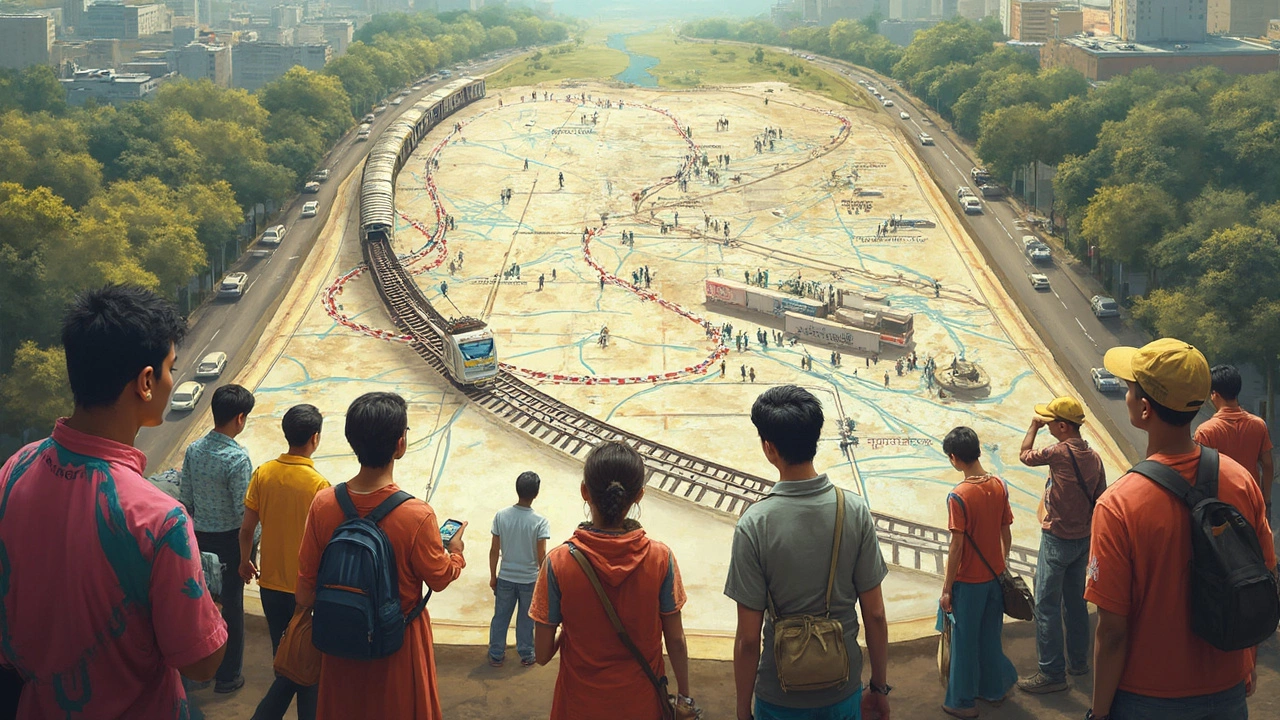Is Amtrak the Fastest Way: Train vs. Car Travel Time Compared
 Jun, 27 2025
Jun, 27 2025
If you think America's love affair with the open road means trains always lose the race, you might want to buckle up before you read any further. Amtrak pitches itself as a stress-free, eco-friendly ride, but some folks still swear by their trusty cars and Google Maps. So, when it comes down to it—train or car—which way gets you to your destination faster? Let's peel away the marketing talk, look under the hood at schedules, traffic patterns, and real-world numbers to find out what actually saves you the most time on the route between city A and city B.
The Reality of Amtrak Speed vs. Car Travel
Most people check Google Maps and glance at Amtrak schedules thinking they’ve got all the info they need. But here's what really tips the scales: Amtrak's top speed is 150 mph on stretches of the Northeast Corridor, while most cars stick near legal speed limits—often 65-75 mph on highways. But that’s not the whole story. The fastest regularly scheduled Amtrak service is the Acela Express, running between Boston and Washington, D.C. Despite hitting impressive max speeds, average trip speeds can land much lower, often closer to 85 mph including stops and slow zones.
Let’s compare: say you need to get from New York City to Washington, D.C. According to Amtrak, the Acela covers the trip in about 2 hours and 49 minutes. Google Maps (as of June 2025, rush hour not included) estimates the same route by car takes about 4 hours, and that’s if traffic behaves itself. But if you look outside the Northeast Corridor, let’s say Chicago to St. Louis, Amtrak’s Lincoln Service takes almost 5 hours, while by car, with moderate traffic, the drive is doable in under 4 hours. It flips—depending on your route, either the Amtrak train or your sedan can win by a landslide. The hard truth? If you're talking about routes with dedicated, high-speed rail and minimal stops, trains have the edge. Stepping outside of these specialized routes, your car often pulls ahead.
But it isn’t just the raw numbers; you need to think about waiting in line at the station, time to the platform, possible delays, and actual trip start time. Unlike planes, Amtrak usually recommends you arrive only 30-45 minutes before departure. For a car, unless you're parking in the heart of the city or stuck in a traffic jam from hell, you roll out when you please.

Traffic, Delays, and the Real World
We all know what it feels like to be gridlocked on a freeway with a cup of cold coffee and an ETA that keeps pushing out. Meanwhile, trains don’t have to worry about stoplights or rush hour in the traditional sense. But here’s a twist: Amtrak shares a lot of track outside the Northeast with freight trains, which actually get priority on much of America's rail network. That means passenger trains can sometimes crawl behind slower moving freight, creating unexpected delays that don’t show up on the timetable. In 2023, the Federal Railroad Administration reported that on-time performance on many non-Northeast routes dropped below 70 percent, with delays mostly due to freight conflicts or track maintenance.
If you’re sticking to rush hour times or traveling between major cities (think Boston to Philly, or DC to New York), Amtrak often wins hands down because traffic on I-95 is next-level brutal—upwards of 5-6 hours is not uncommon at peak times by car, compared to the sub-three- or four-hour train ride. But if you’re not on one of Amtrak’s faster lines or you need to go “off schedule,” driving is usually more flexible—even if you hit a backup, you’re not tied to rigid departure times.
Weather plays havoc with both. A summer thunderstorm can block tracks or slow a train; blizzards strand motorists. And nobody wants to talk about what happens if your